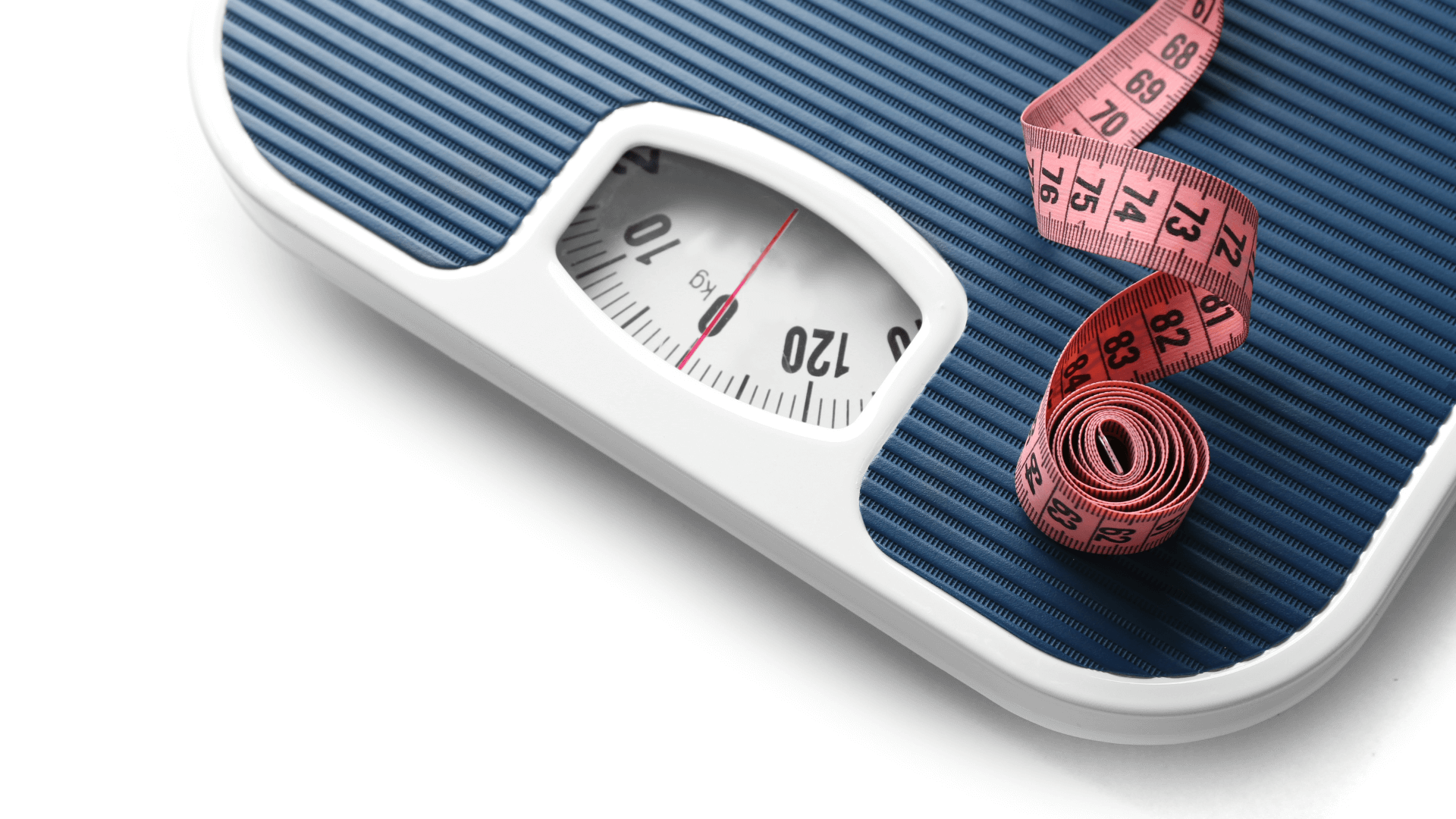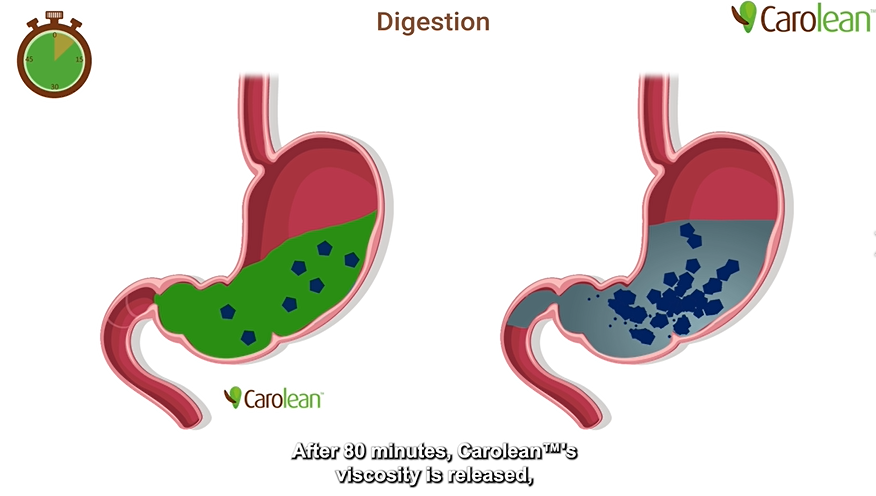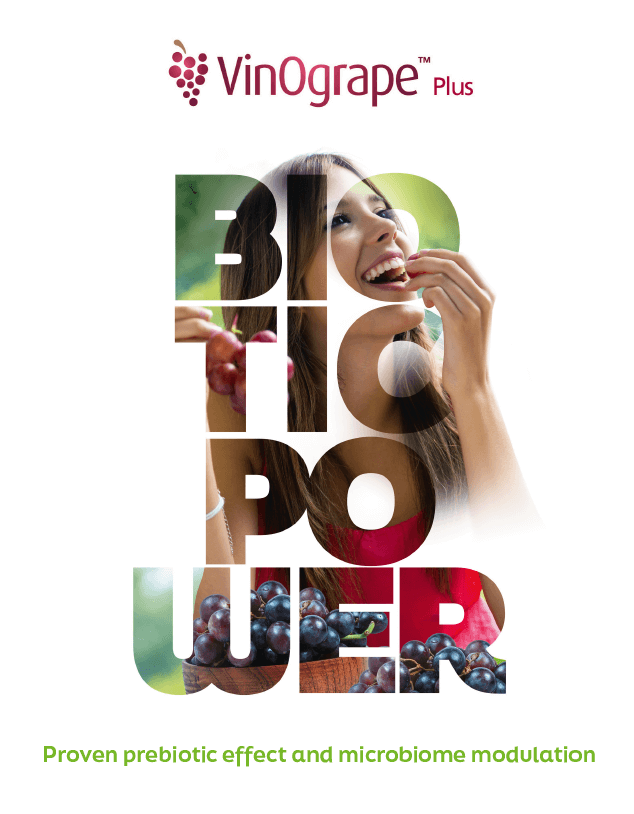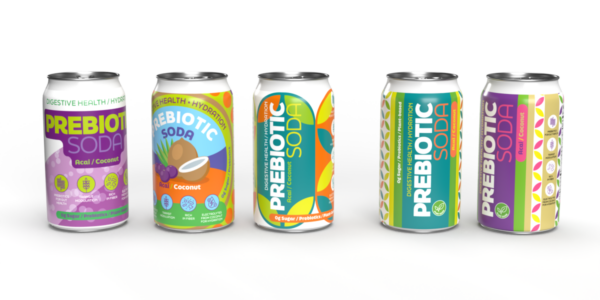In this insightful collaborative blog post, we are delighted to host David, an esteemed guest author who recently co-presented a weight management webinar with Nexira. David explores the two new intriguing ingredients launched by Nexira: Carolean™ and VinOgrape™ Plus.
Satiety and Microbiome Support for Weight Management
Natural solutions for weight management often bring a sour taste into the mouths of those who struggle to maintain a healthy weight. Fad diets, false advertising, and promises of the miracle pill to shed 30 pounds in 30 days have left consumers numb. Having said this, two new ingredients recently caught my attention: CaroleanTM and VinOgrapeTM Plus. We must examine the 11 underlying contributing factors for weight management to understand why these ingredients caught my attention. I wrote an article on these 11 underlying contributing factors earlier this year to help us all understand why people struggle with weight management. For a quick reminder, the 11 factors are Leptin, Ghrelin, AMPK, Inflammatory cytokines (TNF-alpha/Interleukin-6), Insulin, Insulin resistance, Pituitary (primarily cortisol), Adiponectin, Oxidative stress, Microbiome, and Sleep.[i] [ii] [iii] [iv] [v] [vi] [vii]
These two new ingredients fit into three of these 11 areas. Let’s take a quick look at the areas they should impact.
Ghrelin
Ghrelin is a hormone made by the stomach when it is empty. Therefore, ghrelin increases food intake and fat deposits and decreases energy production (your body’s way of storing energy for future use).[viii] The microbiome is vital in ghrelin production since this process starts in the gut. If we feel full, we are less likely to want to snack between meals and eat less at mealtime.
Insulin Resistance
When cells become too resistant to insulin, this results in elevated blood sugar levels, leading to weight gain.
- Losing weight with insulin resistance is more difficult because the body stores excess blood sugar as fat.[ix]
Gut-Brain Connection (Impacting the Microbiome)
The production of hunger hormones (ghrelin and leptin) and an unhealthy gut microbiome can increase inflammatory markers, which may lead to weight gain and metabolic problems.[x]
- The feelings of appetite and satiety involve complex interactions between hormones from the gastrointestinal tract to the hypothalamus (found in the brain, i.e., Gut-Brain connection) and subsequent feedback (Ghrelin/leptin).[xi] [xii]
Now that we know the three areas in which these ingredients may work let’s examine why CaroleanTM and VinOgrapeTM Plus are healthy options for those seeking something to help fit into their daily life for weight management and have no harmful side effects.
CaroleanTM
New complex, for Appetite control
CaroleanTM is a patent-pending formulation combining Carob (Locust Bean gum) and Nopal (Opuntia ficus indica). The combination provides a synergistic blend to help reduce appetite and cravings. When taken with liquid, CaroleanTM will swell in the stomach and form a thick gel-like substance. CaroleanTM works fast because it creates a thick, viscous gel within 15 minutes after ingestion. This fast formation helps optimize satiety more rapidly.
Why is it so important?
Scientific Reports journal states, “Texture and viscosity are the keys to feeling fully satisfied and impacts total daily calorie intake.”[xiii]
Rational
- Satiety can stop the production of the hormone ghrelin. Ghrelin is secreted when the stomach is empty and triggers feelings of hunger.[xiv]
- Feeling full triggers, Peptide YY is released and ultimately binds to receptors in the brain, decreasing appetite and creating satiety.[xv]
Triggering Satiety: A Powerful and Safe way to support weight management
- Decrease in desire to snack
- Decrease in food consumption during meals
- Decrease in total daily calorie intake
- Using texture and viscosity yields no harmful health effects
Need more information?
VinOgrapeTM Plus
VinOgrape™ Plus is a natural grape extract with proven benefits for the microbiome. We see below that having an ingredient with a positive impact on the microbiome (also thought of as microbiome modulation) can have a direct impact on weight management. VinOgrapeTM is high in grape polyphenols which make great prebiotics. For those unfamiliar with polyphenols and prebiotics, polyphenols are beneficial plant compounds found in various foods (like grapes), and a prebiotic is food for the friendly bacteria (probiotics) found in the gut. When we look at these three areas, we see why VinOgrapeTM Plus is a viable option for both microbiome modulation and weight management.
Gut-Brain Connection
The production of hunger hormones (Ghrelin and leptin) and an unhealthy gut microbiome can increase inflammatory markers, which may lead to weight gain and metabolic disease.[xvi]
- The feelings of appetite and satiety involve complex interactions between hormones from the gastrointestinal tract to the hypothalamus and subsequent feedback (Ghrelin/leptin).[xvii] [xviii]
Polyphenols and Microbiome Connection[xix]
- Polyphenols from grapes are not well absorbed and, therefore, reach the colon in an unaltered form (prebiotic effect).
- The effect of polyphenols on the intestinal microbiota is achieved by influencing the growth and metabolism of bacteria (prebiotic activity).
- Recent studies demonstrated the beneficial effect of grape polyphenols by stimulating bacteria such as Akkermansia muciniphila (AM). AM has positive influences in several areas that influence weight management (for example, insulin resistance.[xx])
- Red grape extract or grape seeds were observed to have many benefits by increasing important probiotics such as Lactobacillus reuteri, Lactobacillus acidophilus, Clostridiales, and Ruminococcus. (A positive impact on the microbiome)
Impact on the balance of good and bad organisms in the gut
Dysbiosis and its impact on metabolic health and weight management[xxi]
Dysbiosis is the technical term for when you have an imbalance of good microorganisms to bad microorganisms in your gut. Having more bad microorganisms vs. good microorganisms causes “dysbiosis,” which leads to other more severe health issues, including weight gain. We can see below how dysbiosis impacts weight management.
- The microbiome influences alterations in energy balance and immunity, leading to metabolic dysfunction (e.g., insulin resistance)
- Dysbiosis is a possible contributing factor to metabolic conditions.
Increases in Akkermansia muciniphila and weight management connections[xxii] [xxiii]
Akkermansia muciniphila is a beneficial bacteria (probiotic). We can see from the points below how supporting its growth as mentioned above in our discussion of grape polyphenols.
- Akkermansia muciniphila has been linked to decreased fat layers under the skin, waist-to-hip ratios, and fasting blood glucose levels.
- It may induce a noticeable improvement in insulin sensitivity metabolism, reduce metabolic syndrome, and therefore may help with weight management.
- The abundance of Akkermansia muciniphila was strongly connected to body mass index (BMI). (More Akkermansia muciniphila means lower BMI.)
- Significantly reduced insulin sensitivity, decreased total cholesterol, and slightly reduced body weight compared to the placebo group.[xxiv]
Putting a Bow on this Topic
Over the past several decades, weight management has been a growing topic (no pun intended). Many ingredients have entered the marketplace during these years, claiming to be the next magic solution. The problem with most of them is that they often come with unwanted side effects such as bad for blood pressure, triggering anxious feelings, interfering with sleep, bloating, and so much more. Carolean and VinOgrapeTM Plus provide safe and effective ways to address weight management without unwanted side effects. They also offer benefits in three critical underlying causes for weight management.

In this collaborative blog post, we are thrilled to introduce a co-author, David J. Foreman, RPh, ND. David is a pharmacist, naturopath, author, speaker and media personality known internationally as, “The Herbal Pharmacist®”. He currently is a on the editorial advisory board for Nutritional Outlook and frequent speaker at most industry events such as; Vitafoods Europe, Vitafoods Asia, Supply Side West and Vitafoods Insights.
If you want to learn more about the Healthy Weight market and Nexira’s launches, we invite you to watch our 30-minute webinar replay, ‘Holistic Weight Management: How to Address this Shifting Market & Adapt Your Nutraceutical Offer.’ Our experts will guide you through the latest trends, strategies, and opportunities in this dynamic field. Click on the picture below to gain access to the on-demand replay. Unlock the secrets to success in the ever-evolving world of weight management and nutraceuticals!
Need more information? Samples?
[i] Ochner CN, Barrios DM, Lee CD, Pi-Sunyer FX. Biological mechanisms that promote weight regain following weight loss in obese humans. Physiol Behav. 2013 Aug 15;120:106-13. doi 10.1016/j.physbeh.2013.07.009. Epub 2013 Aug 1. PMID: 23911805; PMCID: PMC3797148.
[ii] Rucker P, Ikuta T. Pituitary Gland Functional Connectivity and BMI. Front Neurosci. 2019 Mar 1;13:120. doi: 10.3389/fnins.2019.00120. PMID: 30881281; PMCID: PMC6405688.
[iii] Sikaris KA. The clinical biochemistry of obesity. Clin Biochem Rev. 2004 Aug;25(3):165-81. PMID: 18458706; PMCID: PMC1880830.
[iv] Sikaris KA. The clinical biochemistry of obesity. Clin Biochem Rev. 2004 Aug;25(3):165-81. PMID: 18458706; PMCID: PMC1880830.
[v] Álvarez-Arraño V, Martín-Peláez S. Effects of Probiotics and Synbiotics on Weight Loss in Subjects with Overweight or Obesity: A Systematic Review. Nutrients. 2021 Oct 17;13(10):3627. doi: 10.3390/nu13103627. PMID: 34684633; PMCID: PMC8540110.
[vi] Mao Kemin, Gao Jie, Wang Xianghong, Li Xiyu, Geng Shuo, Zhang Tuo, Sadiq Faizan Ahmed, Sang Yaxin, Bifidobacterium animalis subsp. lactic BB-12 Has Effect Against Obesity by Regulating Gut Microbiota in Two Phases in Human Microbiota-Associated Rats, Frontiers in Nutrition 8 2022, https://www.frontiersin.org/articles/10.3389/fnut.2021.811619, DOI=10.3389/fnut.2021.811619
[vii] Long YC, Zierath JR. AMP-activated protein kinase signaling in metabolic regulation. J Clin Invest. 2006 Jul;116(7):1776-83. doi: 10.1172/JCI29044. PMID: 16823475; PMCID: PMC1483147.
[viii] Poher AL, Tschöp MH, Müller TD. Ghrelin regulation of glucose metabolism. Peptides. 2018 Feb;100:236-242.
[ix] Kahn BB, Flier JS. Obesity and insulin resistance. J Clin Invest. 2000 Aug;106(4):473-81. doi: 10.1172/JCI10842. PMID: 10953022; PMCID: PMC380258.
[x] Petraroli M, Castellone E, Patianna V, Esposito S. Gut Microbiota and Obesity in Adults and Children: The State of the Art. Front Pediatr. 2021 Mar 19;9:657020. doi: 10.3389/fped.2021.657020. PMID: 33816411; PMCID: PMC8017119.
[xi] Leeuwendaal NK, Cryan JF, Schellekens H. Gut peptides and the microbiome: focus on ghrelin. Curr Opin Endocrinol Diabetes Obes. 2021 Apr 1;28(2):243-252. doi: 10.1097/MED.0000000000000616. PMID: 33481425; PMCID: PMC7924980.
[xii] Rajala MW, Patterson CM, Opp JS, Foltin SK, Young VB, Myers MG Jr. Leptin acts independently of food intake to modulate gut microbial composition in male mice. Endocrinology. 2014 Mar;155(3):748-57. doi: 10.1210/en.2013-1085. Epub 2014 Jan 1. PMID: 24424041; PMCID: PMC3929727.
[xiii] Stribiţcaia E, Evans CEL, Gibbons C, Blundell J, Sarkar A. Food texture influences on satiety: systematic review and meta-analysis. Sci Rep. 2020 Jul 31;10(1):12929. Doi: 10.1038/s41598-020-69504-y. PMID: 32737349; PMCID: PMC7395742.
[xiv] Yeung AY, Tadi P. Physiology, Obesity Neurohormonal Appetite And Satiety Control. [Updated 2023 Jan 3]. In: StatPearls [Internet]. Treasure Island (FL): StatPearls Publishing; 2023 Jan-. Available from: https://www.ncbi.nlm.nih.gov/books/NBK555906/
[xv] Karra E, Chandarana K, Batterham RL. The role of peptide YY in appetite regulation and obesity. J Physiol. 2009 Jan 15;587(1):19-25. doi: 10.1113/jphysiol.2008.164269. Epub 2008 Dec 8. PMID: 19064614; PMCID: PMC2670018.
[xvi] Petraroli M, Castellone E, Patianna V, Esposito S. Gut Microbiota and Obesity in Adults and Children: The State of the Art. Front Pediatr. 2021 Mar 19;9:657020. doi: 10.3389/fped.2021.657020. PMID: 33816411; PMCID: PMC8017119.
[xvii] Leeuwendaal NK, Cryan JF, Schellekens H. Gut peptides and the microbiome: focus on ghrelin. Curr Opin Endocrinol Diabetes Obes. 2021 Apr 1;28(2):243-252. doi: 10.1097/MED.0000000000000616. PMID: 33481425; PMCID: PMC7924980.
[xviii] Rajala MW, Patterson CM, Opp JS, Foltin SK, Young VB, Myers MG Jr. Leptin acts independently of food intake to modulate gut microbial composition in male mice. Endocrinology. 2014 Mar;155(3):748-57. doi: 10.1210/en.2013-1085. Epub 2014 Jan 1. PMID: 24424041; PMCID: PMC3929727.
[xix] Plamada D, Vodnar DC. Polyphenols-Gut Microbiota Interrelationship: A Transition to a New Generation of Prebiotics. Nutrients. 2021 Dec 28;14(1):137. doi: 10.3390/nu14010137. PMID: 35011012; PMCID: PMC8747136.
[xx] Jian H, Liu Y, Wang X, Dong X, Zou X. Akkermansia muciniphila as a Next-Generation Probiotic in Modulating Human Metabolic Homeostasis and Disease Progression: A Role Mediated by Gut-Liver-Brain Axes? Int J Mol Sci. 2023 Feb 15;24(4):3900. doi: 10.3390/ijms24043900. PMID: 36835309; PMCID: PMC9959343
[xxi] Aoun A, Darwish F, Hamod N. The Influence of the Gut Microbiome on Obesity in Adults and the Role of Probiotics, Prebiotics, and Synbiotics for Weight Loss. Prev Nutr Food Sci. 2020 Jun 30;25(2):113-123. doi: 10.3746/pnf.2020.25.2.113. PMID: 32676461; PMCID: PMC7333005
[xxii] Jian H, Liu Y, Wang X, Dong X, Zou X. Akkermansia muciniphila as a Next-Generation Probiotic in Modulating Human Metabolic Homeostasis and Disease Progression: A Role Mediated by Gut-Liver-Brain Axes? Int J Mol Sci. 2023 Feb 15;24(4):3900. doi: 10.3390/ijms24043900. PMID: 36835309; PMCID: PMC9959343.
[xxiii] Aoun A, Darwish F, Hamod N. The Influence of the Gut Microbiome on Obesity in Adults and the Role of Probiotics, Prebiotics, and Synbiotics for Weight Loss. Prev Nutr Food Sci. 2020 Jun 30;25(2):113-123. doi: 10.3746/pnf.2020.25.2.113. PMID: 32676461; PMCID: PMC7333005
[xxiv] epommier C., Everard A., Druart C., Plovier H., Van Hul M., Vieira-Silva S., Falony G., Raes J., Maiter D., Delzenne N.M., et al. Supplementation with Akkermansia muciniphila in overweight and obese human volunteers: A proof-of-concept exploratory study. Nat. Med. 2019;25:1096–1103. doi: 10.1038/s41591-019-0495-2.
This communication is not intended to the final consumer. It provides scientific information for professionals only. Communications to the final consumer have to be checked according to local regulations in force, since the conditions of use are beyond our control. This statement has not been evaluated by the FDA. This product is not intended to diagnose, treat, cure, or prevent any disease.








